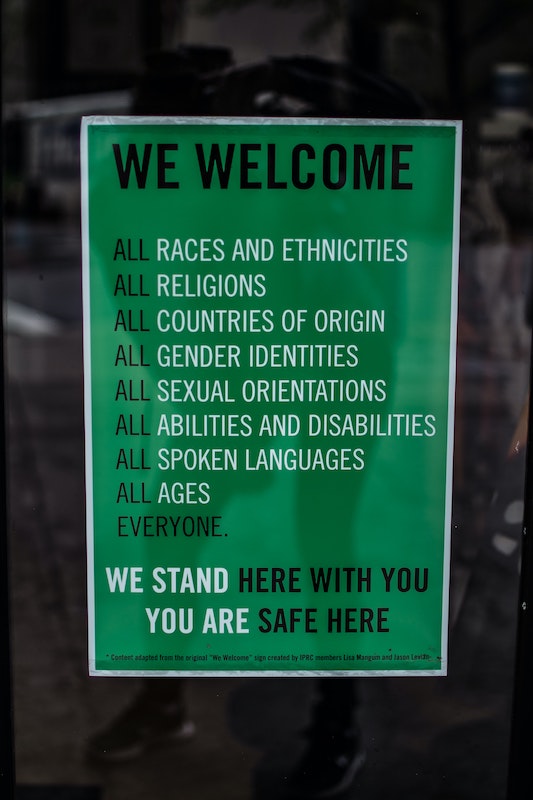Accessibility Diversity
Diversity
There are close to 8 billion people in the world. According to World Health Organization, there are over one billion people with disabilities. That is about 15 % of the population. Access to information is a human right.

This poster says it all. People are different. People are diverse. We must welcome everyone regardless of race, religion, country of origin, gender identity, sexual orientation, ability and disabilities, spoken language or age. We think that web accessibility is about abilities and disabilities. It is also about spoken languages. Is your content written in an easily understandable way for people with a different language background? Have you avoided text in images, so that all text is translatable? It is also about age. With age comes challenges. Technical challenges. Cognitive challenges. Mobility challenges.
Diversity of abilities
A disability is not a yes or a no. All people for many different reasons experience varying degrees of auditory, cognitive, physical, speech and visual disabilities. We grow older. Our health conditions change. We have good and bad days. We get ill. We have temporary impairments due to accidents, surgeries and medication. We have situational limitations due to our surroundings and situations. The spectrum is large.
Groups of disabilities
Disabilities can be categorized into five groups:
Auditory
People with hearing loss. Remember transcripts for audio and captions for video.
Cognitive, learning and neurological
People that may have challenges understanding information. Remember a clear structure, consistent labeling, predictable links and plain language. This helps everyone regardless of ability or disability.
Physical
People with limitations in their muscular control, sensations, joint disorders or missing limbs. Remember to support assistive technologies like switches and voice recognition and to have sufficient target sizes. Target size is the size of a interactive element, the clickable or tapable area.
Speech
Some people are not able to speak. Do not make your service voice-based only.
Visual
People with reduced vision. Make sure text and images can be enlarged, you use sufficient contrast, that you do not rely on color alone, and that the content supports text-to-speech.
Permanent, temporary and situational disabilities
Accessibility is not only about permanent disabilities.
Touch
- A person with one arm has a permanent disability
- A person with a broken arm has a temporary disability
- A new parent holding a baby on one arm has a situational disability
See
- A blind person has a permanent disability
- A cataract can be temporary
- A distracted driver has a situational disability
Hear
- A deaf person has a permanent disability
- An ear infection is temporary
- A bartender has a situational disability
Speak
- A non-verbal person has a permanent disability
- A person with laryngitis has a temporary disability
- A person with a heavy accent has a situational disability
You are not the user
Always remember that you are not the user. As designers and developers, we often think that what can be used, accessed and understood by us, also is good enough for others.
Internet IS for everyone – but it won’t be unless WE make it so.

